In this article, we will be discussing Near! The Blockchain is designed to provide developers with a way to deploy their smart contract applications built on Near in a smooth and easy manner.
Introduction
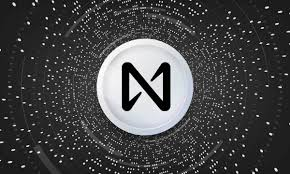
NEAR Protocol is an open-source blockchain platform designed to provide a fast and scalable infrastructure for decentralized applications (dApps). It aims to enable developers to create and deploy dApps that rival centralized applications in terms of speed, scalability, and cost-effectiveness. NEAR utilizes advanced technologies like sharding and Proof of Stake to achieve high throughput and fast confirmation times, making it suitable for both small and large dApps. The platform offers a user-friendly development environment similar to the web, allowing developers to easily build and deploy dApps regardless of their programming language.
How Does Near Work?
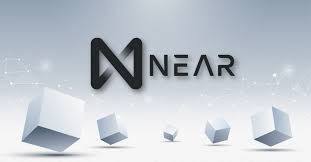
NEAR Protocol is a blockchain platform designed to provide a scalable and developer-friendly infrastructure for building decentralized applications (dApps). Its key features and architecture are as follows:
Architecture
NEAR Protocol's architecture consists of two main layers:
-
Blockchain Layer: This layer handles the core blockchain functionalities, such as transaction processing, block production, and consensus. It is responsible for manipulating transactions and receipts but does not directly operate on accounts.
-
Runtime Layer: This layer is responsible for executing smart contracts and managing the state of the blockchain. It is deeply aware of the concept of accounts and handles fees, rewards, and other account-related operations. The runtime layer is independent of the blockchain layer, allowing for flexibility in the underlying consensus and virtual machine.
Key Components and Features of Near

Sharding (Nightshade)
The defining feature of NEAR Protocol is its sharding technology, called "Nightshade". Nightshade divides the blockchain into multiple parallel shards, each capable of processing transactions independently. This allows the network to scale infinitely, as new shards can be created and destroyed based on demand. In Nightshade, each block contains "chunks" of data from different shards, which are then processed by the corresponding validators. This distributed processing approach enhances the network's throughput and reduces transaction fees.
Proof of Stake Consensus
NEAR Protocol uses a Proof of Stake (PoS) consensus mechanism, where validators stake NEAR tokens to validate blocks. The protocol requires a minimum stake of 26,000 NEAR tokens (around $200,000 at current prices) to become a validator. This staking model helps to ensure the security and efficiency of the network.
Developer-Friendliness
NEAR Protocol aims to be developer-friendly, offering features like named accounts, account abstraction, and a rich Access Keys system. Developers can build smart contracts using popular languages like JavaScript and Rust, with comprehensive documentation and easy onboarding.
Interoperability
NEAR Protocol is designed to be interoperable with other blockchain networks, enabling seamless communication and transactions between different chains. Overall, NEAR Protocol's innovative architecture, sharding technology, and developer-centric approach position it as a promising solution for building scalable, secure, and user-friendly decentralized applications.
How Do Smart Contracts Work on Near?
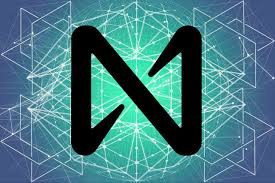
Now, let’s understand how smart contracts built elsewhere work exactly on the Near protocol.
-
Smart contracts on NEAR are self-executing programs that define the rules and conditions of an agreement between parties. They are stored and executed on the NEAR blockchain, ensuring transparency, security, and automation of the agreed-upon terms.
-
NEAR provides a developer-friendly environment for building decentralized applications (dApps). Developers can leverage NEAR's scalability, security, and interoperability features to create dApps that rival centralized applications in terms of performance and user experience.
-
The process of developing a dApp on NEAR typically involves the following steps:
-
Setting up the development environment with the necessary tools and SDKs.
-
Writing the smart contract code in Rust or AssemblyScript to define the application logic.
-
Compiling and testing the smart contract to ensure it functions as expected.
-
Deploying the smart contract to the NEAR blockchain.
-
Integrating the smart contract with the front-end application to create the complete dApp.
-
-
-
NEAR provides several Software Development Kits (SDKs) to assist developers in building dApps on the platform:
-
NEAR SDK for Rust: This SDK allows developers to write smart contracts in the Rust programming language, leveraging its performance and safety features.
-
NEAR SDK for AssemblyScript: This SDK enables developers to use the TypeScript-like AssemblyScript language to build smart contracts, making it more accessible for web developers.
-
These SDKs provide a comprehensive set of tools, libraries, and APIs that simplify the development, testing, and deployment of dApps on the NEAR blockchain. They abstract away the complexities of the underlying blockchain infrastructure, allowing developers to focus on building their applications.
Near’s Economic Model
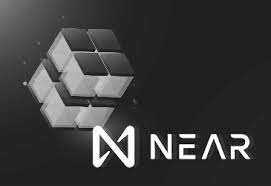
Staking and Validators
NEAR Protocol's economic model is designed to incentivize staking and validation of transactions on the network.
Validators on NEAR are required to stake a minimum of 26,000 NEAR tokens (around $200,000 at current prices) to participate in the network.
The more NEAR tokens a validator stakes, the more seats they can acquire, allowing them to validate a larger share of the network's transactions.
Validators are rewarded for their participation through block rewards and transaction fees. The protocol automatically measures the availability of validators, and those who fail to meet a certain uptime threshold lose their validator status and miss out on epoch rewards. This incentivizes validators to maintain high-quality nodes and reliable performance.
NEAR also enables delegation, where users can stake their NEAR tokens with validators and receive a portion of the rewards. This allows individuals who don't want to run their own nodes to participate in the network's security and earn rewards.
Gas Fees
NEAR uses a gas-based fee model to compensate validators for processing transactions. Each transaction on the NEAR blockchain consumes a certain amount of gas, which is calculated based on the computational resources required to execute the transaction.
The gas price, which determines the cost of a transaction, is dynamically adjusted based on network usage. If the previous block used more than half of the gas limit, the gas price is increased slightly. If the block uses less than half of the gas limit, the gas price is decreased. This mechanism helps to maintain a stable and affordable transaction fee for users.
The fees collected from transactions are not distributed to validators but are instead burned, reducing the overall supply of NEAR tokens. This is done to incentivize validators to focus on processing transactions efficiently rather than competing for fees.
Tokenomics
NEAR tokens (NEAR) are the native cryptocurrency of the NEAR Protocol. NEAR tokens serve several purposes in the ecosystem:
-
Staking: NEAR tokens are required for staking to become a validator and participate in the network's consensus.
-
Governance: NEAR token holders can participate in the network's governance and decision-making processes.
-
Utility: NEAR tokens are used to pay for gas fees and other network-related costs, such as storage staking.
The NEAR token has a fixed total supply, with a portion of the tokens allocated to the NEAR Foundation, the team, and early investors. The remaining tokens are gradually released through the network's inflation, which is used to reward validators and maintain the network's security.
Overall, NEAR's economic model is designed to incentivize participation, ensure network security, and maintain a stable and affordable transaction fee structure for users and developers.
Near Ecosystem
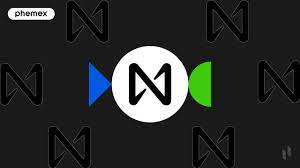
NEAR Wallet
NEAR Protocol offers a user-friendly wallet called the NEAR Wallet, which allows users to store, send, and receive NEAR tokens. The NEAR Wallet provides several key features:
-
Account Management: Users can create and manage multiple NEAR accounts, each with its own set of access keys and permissions.
-
Staking and Delegation: Users can stake their NEAR tokens to become validators or delegate their tokens to existing validators to earn rewards.
-
Transaction Management: The wallet enables users to easily send and receive NEAR tokens, as well as interact with decentralized applications (dApps) built on the NEAR Protocol.
-
Security: The NEAR Wallet offers advanced security features, such as multi-factor authentication and the ability to recover accounts using a recovery phrase.
NEAR Explorer
The NEAR Explorer is a web-based tool that allows users to interact with the NEAR blockchain.
Some of the key features of the NEAR Explorer include:
-
Transaction Tracking: Users can search for and view details of specific transactions, including the sender, recipient, and the amount of NEAR tokens involved.
-
Account Monitoring: Users can explore the details of NEAR accounts, including the account balance, staked tokens, and transaction history.
-
Block Exploration: The Explorer provides information about the blocks produced on the NEAR blockchain, including the block height, timestamp, and the validators who participated in the block production.
-
Contract Inspection: Users can view the details of smart contracts deployed on the NEAR blockchain, including the contract code, storage, and the transactions that have interacted with the contract.
Community and Developer Resources
NEAR Protocol has a thriving community and a wealth of resources available for developers:
-
NEAR Documentation: NEAR provides comprehensive documentation covering various aspects of the protocol, including development guides, API references, and tutorials.
-
NEAR Forums: The NEAR community maintains active forums where developers can ask questions, discuss issues, and collaborate on projects.
-
NEAR Hackathons: NEAR regularly organizes hackathons and other events to encourage developers to build innovative applications on the platform.
-
NEAR Ecosystem: The NEAR Ecosystem is a curated directory of projects, teams, and workgroups that are part of the NEAR ecosystem. It provides a way for developers to connect with the community and explore potential collaborations.
-
NEAR SDKs: NEAR offers Software Development Kits (SDKs) for popular programming languages like Rust and AssemblyScript, making it easier for developers to build smart contracts and dApps.
Overall, NEAR's ecosystem and community resources provide a robust and supportive environment for developers to build and deploy decentralized applications on the NEAR Protocol.
Case Studies and Success Stories
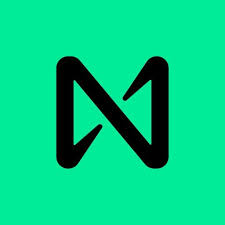
-
NEAR Protocol has already seen the development of several decentralized applications (DApps) that showcase the platform's capabilities:
-
Paras: Paras is a non-fungible token (NFT) marketplace built on NEAR, allowing users to create, buy, sell, and trade digital art and collectibles.
-
Ref Finance: Ref Finance is a decentralized exchange (DEX) built on NEAR, providing users with a platform to swap, lend, and borrow digital assets.
-
Burrow: Burrow is a decentralized social media platform built on NEAR, offering users a censorship-resistant and privacy-focused alternative to traditional social media.
-
Flux: Flux is a decentralized cloud computing platform built on NEAR, enabling users to rent out their idle computing resources and earn NEAR tokens.
These DApps leverage NEAR's scalability, developer-friendliness, and interoperability features to provide users with innovative and efficient decentralized solutions across various domains, including finance, social media, and cloud computing.
-
Future Prospects
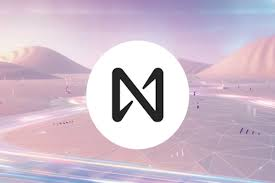
NEAR Protocol has a clear roadmap and plans for the future of the platform:
Scalability Improvements
One of NEAR's top priorities is enhancing the scalability of the network. The team is focused on implementing solutions that will allow NEAR to handle a higher volume of transactions and provide a seamless user experience.
Security Enhancements
In addition to scalability, NEAR Protocol is working on improving the security mechanisms of the network. This includes implementing measures to prevent malicious activities and enhancing the consensus algorithm to make the network more secure.
New Features and Functionalities
NEAR Protocol is also planning to introduce new features and functionalities that will further empower developers and enable them to build more advanced decentralized applications (dApps). These features will include improved smart contract functionality, enhanced developer tools, and expanded support for interoperability with other blockchain networks.
Regular Updates and Progress Reports
To keep the community engaged and informed, NEAR Protocol will regularly release updates and progress reports on its roadmap. These updates will provide a transparent view of the platform's development process and enable the community to provide feedback and contribute to the platform's growth.
Partnerships and Collaborations
NEAR Protocol has established several significant partnerships and collaborations that are shaping the future of the platform:
Octopus Network
NEAR has partnered with Octopus Network, which has selected NEAR as its "mother-chain" protocol. This collaboration is paving the way for developers to launch their own dedicated blockchains, known as "Appchains," on the NEAR network.
Google Cloud
NEAR has collaborated with Google Cloud to provide Web3 startups with access to world-class startup expertise and resources, further enhancing the platform's developer-friendly ecosystem.
Urbit
NEAR is working with Urbit to improve the frontend experience of open web applications, making them more user-friendly and seamless.
SailGP
NEAR's partnership with SailGP is bringing Decentralized Autonomous Organizations (DAOs) to professional sports, creating a bridge between leagues and fans.
These partnerships and collaborations demonstrate NEAR Protocol's commitment to expanding its ecosystem, fostering innovation, and driving the adoption of decentralized technologies across various industries.
Conclusion
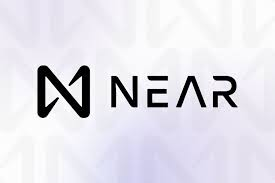
NEAR Protocol stands out for its focus on simplifying blockchain technology, making it more accessible and user-friendly. The platform's scalability, developer-friendliness, and innovative features like sharding and chain abstraction set it apart in the blockchain ecosystem. NEAR's commitment to enhancing usability, scalability, and decentralization, as well as driving real-world adoption through partnerships and collaborations, showcases its potential impact on various industries. Overall, NEAR Protocol's vision of creating a community-run cloud and fostering mainstream adoption of blockchain technology makes it an exciting project with the potential to revolutionize how systems are designed and applications are built.
The platform has attracted significant financial backing and partnerships, positioning itself as a promising player in the blockchain space.




评论 (0)